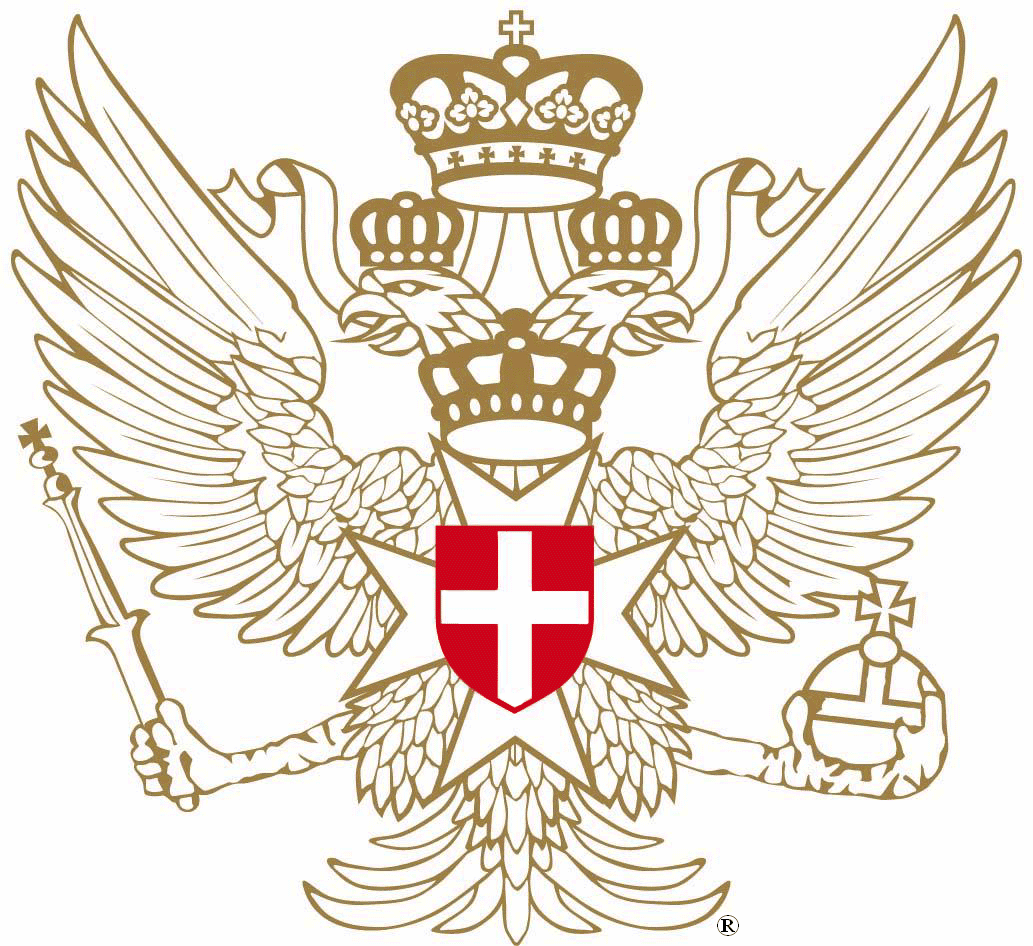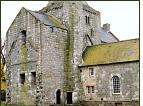 |
||
Definition: The knights of St. John of Jerusalem was a Christian organization that began as an Amalfitan hospital founded in Jerusalem in 1080 to provide care for poor, sick or injured pilgrims to the Holy Land. After the Western Christian conquest of Jerusalem in 1099 during the First Crusade it became a religious/military order under its own charter, and was charged with the care and defence of the Holy Land. Following the loss of the Holy Land by Christian forces, the Order operated from Rhodes, over which it was sovereign, and later from Malta where it administered a vassal state under the Spanish viceroy of Sicily. The rules of the Order were laid down as early as 1120 and required the knights to help the poor and sick and to take vows of poverty, chastity and obedience. |
||
The Hospitallers had come to Scotland to recruit and collect funds for the Crusades |
||
Most of the information given below has been gleamed from "Knights of St. John and Jerusalem", published by the Scottish History Society in 1983. |
||
| The history of the Hospitallers in Scotland before 1312 is difficult to trace although it is probable that in their early development, their history was broadly similar to that of the Templars, though along more modest lines. | ||
 |
||
| Torpichen Church | ||
| The refuge stones, resembling a Roman milestone, the central stone in the churchyard marked the centre of privileged sanctuary ground. A circle of similar stones stood around the edge of the estate, each a mile distant from the centre. All of the space within the circle formed by these stones was as much a legal sanctuary as the church itself and offered protection against the law to every criminal or debtor who entered and remained within its precincts. | ||
| Prior to the outbreak of war in 1296, the Hospitallers seem to have been loyal to the English crown. In fact most of the brethren were indeed English. Wallace occupied Torphichen in 1298 and it is likely that the brethren had to withdraw during his occupation of Southern Scotland. As a result of Edward's great success in 1298, the Hospitallers were able to re-establish themselves at Torphichen, but they must from then onwards have been fearful of hostile neighbours. When the English were driven out of Scotland at the time of the suppression of the Templars, it appears that the Hospitallers departed too and when they returned to Scotland in the fourteenth century, their character had changed considerably. | ||
| It is difficult to see how the Hospitallers with their strong English connections, returned to Scotland and acquire their new windfall from the discredited Templars and more so how the Hospitallers continued after the convent of Rhodes returned to the allegiance of the Roman Pope while Scotland adhered still to Benedict X111 (antipope from 1394 to 1417. He reigned in Avignon, Provence, in opposition to the reigning popes in Rome, during the Western Schism (1378–1417), when the Roman Catholic Church was split by national rivalries claiming the papal throne). | ||
| In 1314, King Robert issued a charter to the master and brethren of the Hospital, confirming to them all the lands, rents, churches and other possessions, as they held them in the time of King Alexander 111. Before the end of Robert 1's reign, there emerges a master of the Hospital of St John of Jerusalem by the name of Rodolph Lindsay, the first master with a Scottish surname. (Probably belonging to the family of Lindsay who were loyal to Robert Bruce). This established a pattern which was to continue down to the Reformation, despite continuing intervention in Scottish affairs by the Prior of England, the preceptors of Scotland were mostly themselves Scots. | ||
| George Dundas knight of the order was at Rhodes in 1504, when he procured the right of expectation to proceed to the preceptory as master at the next vacancy | |
Details of the life of George Dundas are unfortunately few. We may assign 1470 as the approximate year of his birth, in view of the fact that his name occurs in the Roll of St. Andrews University among the matriculants of 1484 and among the determinants of the year 1486. He afterwards proceeded to Paris, and was a student at Montagui College along with Hector Boece, whose stay there began not later than 1492. |
|
George Dundas, Boece tells us, was deeply learned in Greek and Latin literature,' and became head of the Knights of St. John of Jerusalem in Scotland, "overcoming his rivals by great efforts.' As Boece was himself not merely an enthusiastic admirer of brilliant scholarship, such as that of Erasmus, but was the real founder of classical humanism in Scotland, his tribute to the culture of Dundas may be taken as proof of undoubted ability on the part of the latter, and as an indication that he felt in some measure the magnetic charm of the ideas of the Humanists, who were gradually ousting the Schoolmen from their supremacy in Paris. |
|
George Dundas was the first Scotsman indubitably credited with a knowledge of Greek, which he probably commenced to study in Paris, perhaps under some native-born Greek teacher, who would be sure to follow the pronunciation of the contemporary Greek spoken in the Eastern Mediterranean, where Dundas went when he became a member of the Order of St. John. The earliest indication of the arrival of George Dundas in Scotland after his nomination to the Preceptory is in 1508, on the 26th January, when his presence at the Court of James IV. is indicated by the entry of the Lord High Treasurer in his accounts of the advance to the king of a sum of seven shillings to "play at the tables with Sir George Dundas”. |
|
The Scottish Historical Review, Volume Fourteen, "The reigns of James IV. and his son were marked by numerous vindictive contests between the ecclesiastics of the kingdom for power and preferment, but few of these contests have been to moderns so obscure in their origin and so baffling in their various phases as the prolonged and embittered struggle for the wealthy Priory or Preceptory of Torphichen, belonging to the Knights of St. John of Jerusalem in Scotland. The participants in this struggle were George Dundas, the ultimate victor, the nominee of the Knights of St. John as an Order ; James Cortesius, the candidate put forward by the Pope ; Patrick Panter, the Royal Secretary of James IV., whose support he secured ; and Alexander Stewart, the half-brother of the Duke of Albany, Regent of Scotland after the debacle of Flodden. Inventory (MS.) of the Torphichen Writs, Gen. Reg. House, p. 5, note 6. Whitworth Porter gives 1st July, 1504, as the date of Dundas' nomination. |
|
On 3Oth November, 1508, the precept of admission to the temporality of Torphichen was issued to Dundas. He was granted in the most explicit terms control of 'all and singular lands, rents, and possessions ' of the Order, after taking the oath of fealty to King James. He was said to have been * provided ' to- the Preceptory by the Grand Master of Rhodes, as was contained at greater length in the provision and letters given to him.' The tenants and occupiers of lands belonging to the Preceptory were enjoined to answer, obey, and give heed to Dundas and his bailiffs, officers, and servants in the due exercise of their rights, and instructions were issued to the sheriffs of the various counties in which the possessions of the Preceptory were situated to extend the support of Royal authority to Dundas and his representatives in the legitimate prosecution of their rights. In the minutes of the Lords of Council, dated 23rd October, 1509, Dundas was expressly designated Lord St. John when he was upholding the right of his Order to grant sanctuary in Temple lands in opposition to the action of the magistrates of Stirling. 2 On the 24th July, 1510, he received the necessary permission from James to leave Scotland with twenty-four of his men ' to pass to the Court of Rome, Rhodes, and other parts ' and later in this year application was made to the King of England for a safe-conduct for the Lord St. John and sixteen followers, who were to accompany him to ' the parts beyond the sea ' for the transaction of his business." |
|
George Dundas died March 1532 and was succeeded as Lord St. John by Walter Lindsay |
|
| Alexander Dundas and James Dundas shown as temple-bailies in East Lothian, 1518. |
| Alexander Dundas of Fingask: Shown as bailie to Walter Lindsay, preceptor of Torphichen, 1545 |
| Registrum secreti sigilli regum Scotorum: At Strivelin, 24 Jul. A Respit maid to the LORD Of SAINT JHONS, in double forme, and to xxiiii persons his houshold men, to pas to the court of Rome, the Rhodis and other parts, and in spéciale to Jhone Polworth, Duncane Dundas, Jhone Dundas, Bartilmew Auchinlek, Alexander Kennedy, David Cuyk, Walter Stewart, Jhone Polworth. William Leirmonth, William Scot, Jhone Jhonesoun, Alexander Jhonesoun, Patrik Estoun, and all other his men duelling on his propir landis, etc., in the common forme: To endure fra his passing furth of the realme and fourty dais efter his returnyng, etc. Subscripta per Regem. Gratis ex mandato domini per Wardlaw. iv. 100. |
